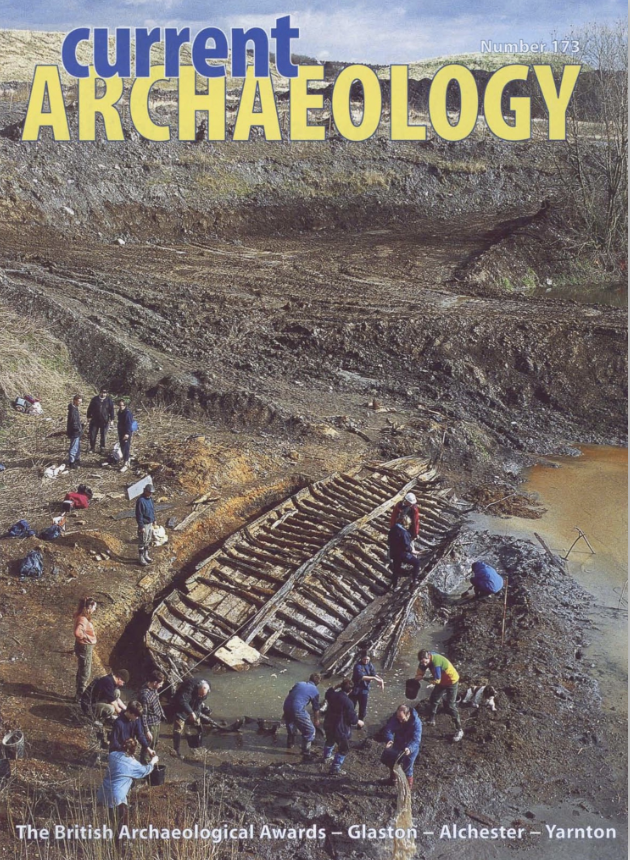This is the biggest issue of Current Archaeology ever, with two major supplements. The centre spread celebrates the British Archaeological Awards: Which were the best projects in British archaeology over the past two years? The British Archaeological Awards set out to mark the outstanding achievements and here we present the results.
The main pages of the magazine have three articles of major importance. Landscape archaeology, tracing the story of a single area over several millennia is a long term fascination. At Yarnton in Oxfordshire there has been probably the largest landscape study ever, funded by English Heritage in advance of gravel digging. It is the everyday story of country folk, spread over six millennia. We present it as a drama in five acts and several entr’actes, from the first farmers in the Neolithic down to the meadsmen in the earliest 20th century, still drawing lots to scythe the hay.
Glaston in Rutland provided a classic example of an excavation suddenly and spectacularly changing direction. It began as the excavation of a Medieval settlement, but then, on nearly the last day, a large bone of unknown type was discovered with a flint spearhead sticking into it. What was this bone? And when was the last time that the woolly rhinoceros roamed the Steppes of central England?
What is the date of the Roman Conquest of Britain? Historians may think they know the answer – AD 43. But how close can archaeology get? Thanks to the precision of tree-ring dating, a remarkable account of the speed of the conquest can now be revealed. At Alchester in north Oxford a Roman fort has been discovered, built shortly after the invasion. One of the timber gateposts survived, still waterlogged. What is the date by which the Romans were building permanent forts in central England?
Then the Science Diary returns, this time from Oxford. The intention is that the Science Diary will rotate among our leading archaeological laboratories, and Professor Michael Tite who directs the Oxford Laboratory introduces the new series.
Finally a separate Handbook features the Directory of British Archaeology: the Who’s who, and where-to-dig of British archaeology.

